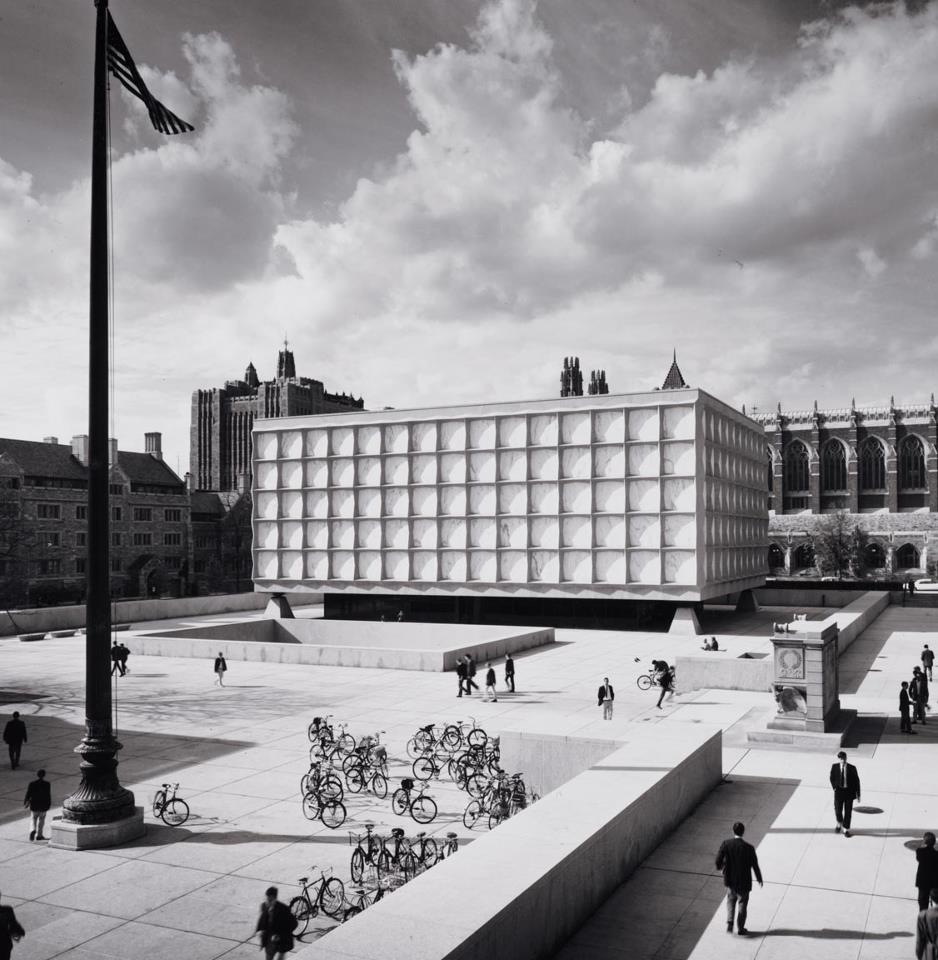A Library for Its Time, Collections Then & Now: A tercentenial celebration of Yale Library collections in 1701 and 2001

The story has often been told that in 1701, when the founding of Collegiate School was imminent, ten ministers gathered at the Branford home of the Reverend Samuel Russel, each bringing a number of books, which were ceremoniously placed on the Reverend Russel’s parlor table to mark the founding of the school. While the exact identity of these books may remain forever shrouded in mists of time and story-telling, the exhibition A Library for its Time gathers a number of volumes that may well have been at Yale since its beginning. This early theological library, well suited to the purposes of Yale’s founders, is contrasted with a rich selection of the diverse authors, subjects, eras, formats, genres, and languages collected by the Beinecke Rare Book & Manuscript Library to support the research and curricula of its time. A Library for its Time, part of Yale tercentennial celebration, will be on view at the Beinecke Library from October 5 until January, 2002.
Yale’s earliest library
The books that found their way into the earliest Yale library were, for the most part, printed in Switzerland, Germany, and Holland in the 16th and 17th centuries. Some were more than a century old when the school opened in 1701 and none of their authors was still among the living. Most of the books are written in Latin, then the lingua franca of scholarship. A few titles, all of them printed in the 1600s, are in English.
In subject, our founding collection documents neither the great expeditions of the age of discovery nor the scientific revolution of the seventeenth century. Not a line of Shakespeare, Marlowe, or Ben Jonson is to be found. The books Yale’s forefathers brought together in 1701 constituted, with the exception of a few historical and philosophical works, a theological library. The Bible is of course present, in the Latin translation of Immanuel Tremellius and Franciscus Junius (Geneva, 1590), as well as the works of Saint Augustine, a ten-volume edition published in Basel in 1569, the gift of Yale’s first rector, Abraham Pierson.
Swiss Reformers associated with Ulrich Zwingli are prominent in Yale’s first library, but the focal point of the collection is Calvinism. Pride of place thus belongs to Calvin’s Institutio Christianae religionis , first published in 1536 and present in the early Yale library in an edition of 1606 printed in Geneva, bearing on its title page the ownership inscription of Yale founder James Pierpont.
The works in English in our hypothetical first library are all commentaries on books of the Bible: Andrew Willet’s commentary on Genesis in its third edition (London, 1632) had made its way to the shelves of Yale’s new library in 1701, where it may have resided with Nicholas Byfield’s thoughts on the Epistle to the Colossians (London, 1615) and with Joseph Caryl’s Exposition with practicall observations upon … the booke of Job , published in London in the mid-17th century.
Books & Beyond: 2001
Three hundred years later, the Beinecke Library is still an avid collector of 16th and 17th century books. Works from this period on art, astronomy, cosmography, costume, architecture, military science, navigation, fencing, fishing, gaming, and hunting are to be found among our recent acquisitions, along with city guides, how-to manuals, biographies, scientific treatises, Classical texts reprinted and translated, and thousands of literary works, from the poet’s sublime art to popular street plays.
Just as Yale’s 16th- and 17th-century collecting practices have grown to include diverse subjects, vernacular languages, disparate genres, and a range of formats, so we have gone backward and forward in time to pursue the record of human history and thought in all its multiplicity. The exhibition includes an illuminated manuscript, representing our large collection of medieval and Renaissance codices, and several incunables, books printed in the West between the appearance of the Gutenberg Bible in 1455 and the beginning of the 16th century.
At the other end of the time-line are 20th-century literary archives and the artistic/literary products of Modernism, represented in the exhibition by Marinetti’s “metal book” and selections from the papers of Gertrude Stein, Georgia O’Keeffe, and the Theatre Guild.
The second half of the Beinecke exhibition is called “Books & Beyond” to emphasize the fact that a modern rare book library collects not only books, but broadsides, pamphlets, maps, musical scores, prints, ephemera, documentary art, audio tapes, historical films, photographs, and even computer disks. The second half of the exhibition includes musical scores and a selection of rare photographs as well as art works by Georgia O’Keeffe and Charles Demuth.
An illustrated brochure will be available during the exhibition.